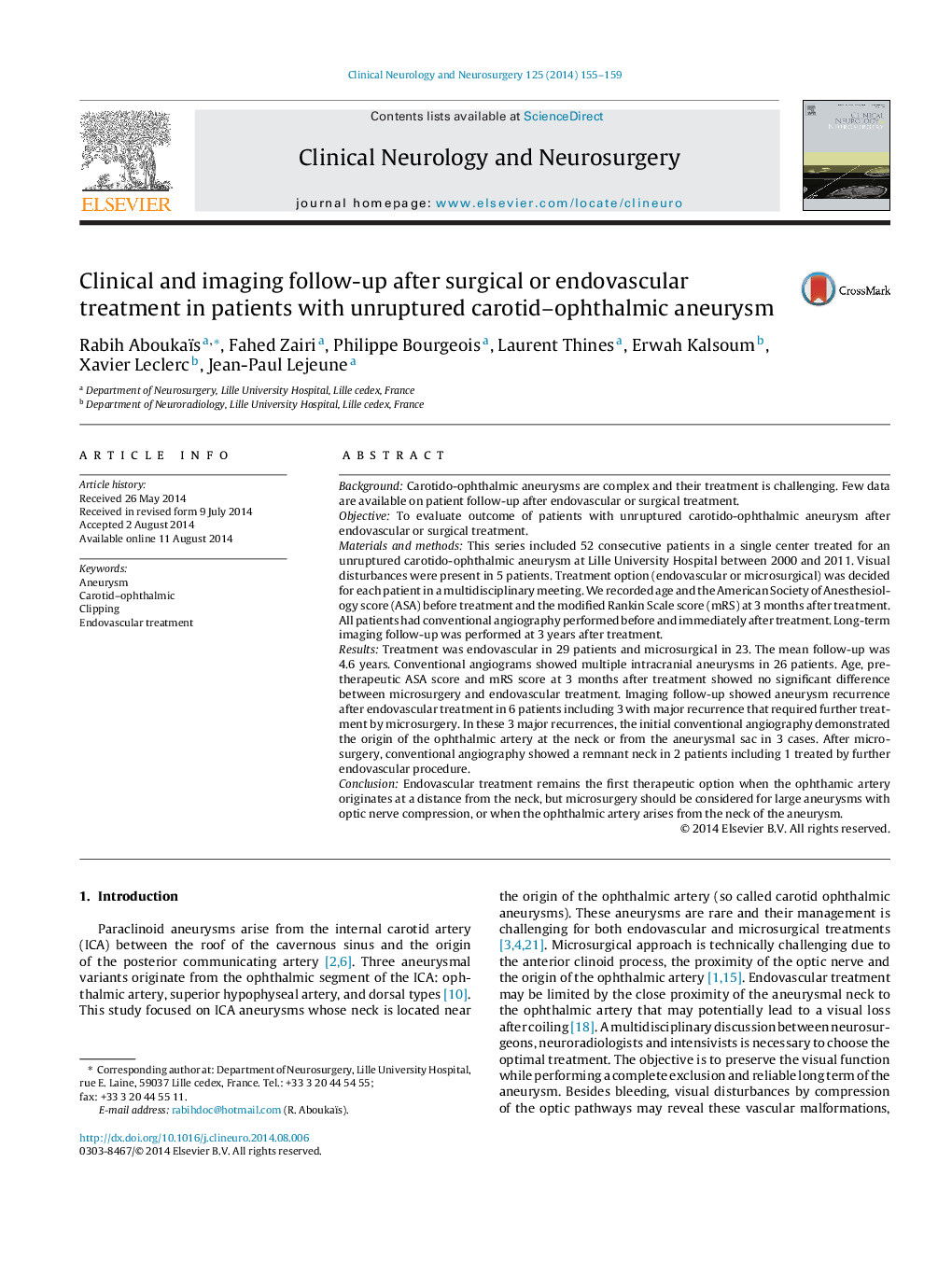| کد مقاله | کد نشریه | سال انتشار | مقاله انگلیسی | نسخه تمام متن |
|---|---|---|---|---|
| 3040221 | 1579697 | 2014 | 5 صفحه PDF | دانلود رایگان |
• Carotido-ophthalmic aneurysms are complex and their treatment is challenging.
• Best treatment always requires a truly multidisciplinary approach.
• Endovascular treatment appears to be the first therapeutic option to consider when the ophthalmic artery originates at a distance from the neck.
• However, microsurgery provides an immediate and effective optic nerve decompression, making it suitable in case of rapid visual acuity decline.
BackgroundCarotido-ophthalmic aneurysms are complex and their treatment is challenging. Few data are available on patient follow-up after endovascular or surgical treatment.ObjectiveTo evaluate outcome of patients with unruptured carotido-ophthalmic aneurysm after endovascular or surgical treatment.Materials and methodsThis series included 52 consecutive patients in a single center treated for an unruptured carotido-ophthalmic aneurysm at Lille University Hospital between 2000 and 2011. Visual disturbances were present in 5 patients. Treatment option (endovascular or microsurgical) was decided for each patient in a multidisciplinary meeting. We recorded age and the American Society of Anesthesiology score (ASA) before treatment and the modified Rankin Scale score (mRS) at 3 months after treatment. All patients had conventional angiography performed before and immediately after treatment. Long-term imaging follow-up was performed at 3 years after treatment.ResultsTreatment was endovascular in 29 patients and microsurgical in 23. The mean follow-up was 4.6 years. Conventional angiograms showed multiple intracranial aneurysms in 26 patients. Age, pre-therapeutic ASA score and mRS score at 3 months after treatment showed no significant difference between microsurgery and endovascular treatment. Imaging follow-up showed aneurysm recurrence after endovascular treatment in 6 patients including 3 with major recurrence that required further treatment by microsurgery. In these 3 major recurrences, the initial conventional angiography demonstrated the origin of the ophthalmic artery at the neck or from the aneurysmal sac in 3 cases. After microsurgery, conventional angiography showed a remnant neck in 2 patients including 1 treated by further endovascular procedure.ConclusionEndovascular treatment remains the first therapeutic option when the ophthamic artery originates at a distance from the neck, but microsurgery should be considered for large aneurysms with optic nerve compression, or when the ophthalmic artery arises from the neck of the aneurysm.
Journal: Clinical Neurology and Neurosurgery - Volume 125, October 2014, Pages 155–159
